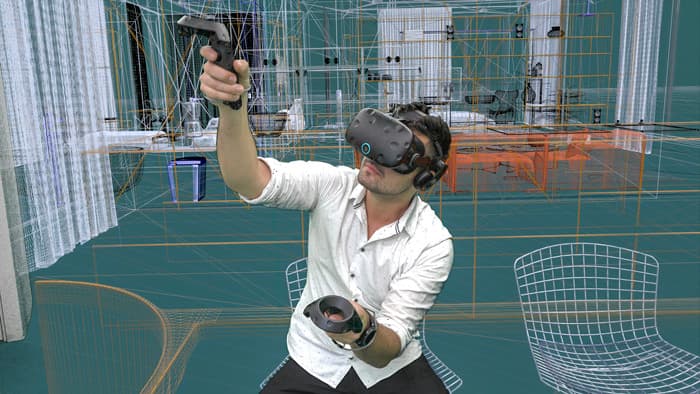Virtual Reality and 3D Modeling: Creating Immersive Experiences

The convergence of virtual reality (VR) and 3D modeling is revolutionizing how we experience digital environments. By combining these technologies, developers can create highly immersive and interactive experiences that span various industries, from entertainment and education to healthcare and architecture. This article explores the transformative impact of VR and 3D modeling, highlighting how they are used to create compelling virtual worlds.
Enhancing Entertainment and Gaming
One of the most prominent applications of VR and 3D modeling is in the entertainment and gaming industry. VR allows gamers to step into virtual worlds, offering an unparalleled level of immersion and interactivity.
“VR provides a deeply immersive experience that traditional gaming cannot match,” says John Carmack, a leading figure in the VR gaming industry. “When combined with detailed 3D models, it creates a sense of presence that makes the virtual world feel real.”
Developers use 3D modeling to create detailed environments, characters, and objects that populate these virtual worlds. The realism and interactivity of these elements are crucial for maintaining player engagement and enhancing the overall experience.
Revolutionizing Education and Training
VR and 3D modeling are also transforming education and training by providing immersive learning environments. These technologies enable students and trainees to interact with complex concepts and scenarios in a controlled, virtual space.
“Virtual reality allows for experiential learning, which is far more effective than traditional methods,” notes Dr. Sarah Thompson, an educational technologist. “Students can explore 3D models of historical sites, biological organisms, or mechanical systems, making learning more engaging and memorable.”
For instance, medical students can practice surgeries on virtual patients created through 3D modeling, while engineering students can interact with virtual models of machinery and infrastructure.
Advancing Architecture and Real Estate
In architecture and real estate, VR and 3D modeling offer powerful tools for visualization and design. Architects can create detailed 3D models of buildings and environments, allowing clients to explore and interact with their projects before construction begins.
“VR enables clients to experience their future homes or offices in a highly realistic way,” explains architect David Richards. “They can walk through virtual models, make design changes, and see the results instantly.”
This capability not only enhances client satisfaction but also streamlines the design process, reducing the need for physical prototypes and revisions.
Transforming Healthcare and Therapy
Healthcare is another field where VR and 3D modeling are making significant strides. These technologies are used for surgical planning, medical training, and even patient therapy.
“VR and 3D modeling allow surgeons to plan and practice complex procedures on virtual models,” says Dr. Emily Carter, a leading surgeon. “This practice improves surgical outcomes and reduces the risk of complications.”
In therapy, VR environments can help patients with conditions such as PTSD or anxiety by gradually exposing them to their triggers in a controlled and safe virtual setting.
Facilitating Remote Collaboration
With the rise of remote work, VR and 3D modeling are becoming essential tools for collaboration. Teams can meet in virtual spaces, interact with 3D models, and work together as if they were in the same room.
“VR meetings and collaborative 3D modeling allow for more dynamic and interactive remote work,” states tech entrepreneur Laura Mitchell. “These tools help bridge the gap between physical and virtual collaboration, making remote work more effective.”
This capability is particularly valuable in industries such as engineering, design, and construction, where physical models and prototypes are essential for collaboration.
Overcoming Challenges and Looking Ahead
While the integration of VR and 3D modeling offers numerous benefits, it also presents challenges. High-quality VR experiences require significant computational power and sophisticated hardware. Additionally, creating detailed 3D models can be time-consuming and resource-intensive.
“The development of VR and 3D modeling technology is progressing rapidly, but there are still hurdles to overcome,” acknowledges Dr. Mark Green, a computer science professor. “Continued advancements in hardware and software will be crucial for making these technologies more accessible and efficient.”
Looking ahead, the future of VR and 3D modeling is bright. As technology continues to evolve, we can expect even more immersive and interactive virtual experiences. Innovations such as AI-driven modeling tools and more powerful VR hardware will further enhance the capabilities and applications of these technologies.
The integration of virtual reality and 3D modeling is transforming how we interact with digital environments. From entertainment and education to healthcare and architecture, these technologies are creating immersive experiences that enhance understanding, engagement, and collaboration. As VR and 3D modeling continue to evolve, their impact will only grow, offering new possibilities for creating and exploring virtual worlds.